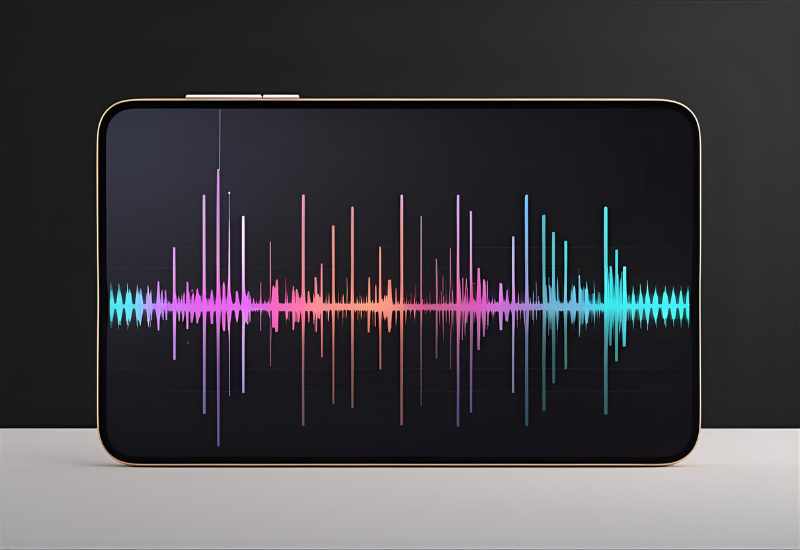In the world of digital content, visuals are everything. But when it comes to music, podcasts, or ambient tracks, creators often face a challenge—how do you make audio visually appealing on YouTube?
That’s where audio visualizers come in. These tools transform soundwaves into captivating animations that sync perfectly with music, turning audio-only content into something worth watching. When done right, they can significantly increase watch time, likes, and shares. But not all visualizers are created equal.
Let’s break down which styles work best on YouTube, what features drive interaction, and how you can choose the right format for your content.
Table of Contents
What Is an Audio Visualizer?
An audio visualizer is a dynamic, animated graphic that responds to the beats, volume, and rhythm of an audio file. You’ve likely seen them in action—waveforms pulsing to the bass, circles expanding with vocals, bars jumping in sync with percussion. They give a visual experience to otherwise static audio uploads.
These visuals are more than eye candy. They can help hook viewers in the first few seconds, provide visual rhythm cues, and give your channel a more polished, professional feel.
What Gets the Most Interaction?
Not every visualizer drives clicks or comments. Based on performance trends and viewer behavior, certain formats consistently outperform others on YouTube. Here's what works:
- Circle Visualizers with Centered Branding
This format is especially popular in EDM and lo-fi music communities. A clean ring pulses with the beat, often surrounding a logo or artwork. It keeps attention centered and allows creators to incorporate branding or album art. - Bar Visualizers with Color Transitions
Moving bars are classic—but adding smooth color transitions makes them more modern and visually appealing. These often perform well with vocal tracks, hip-hop beats, and even podcasts. - Waveform + Background Visuals
Combining waveform animation with a subtle moving background (think blurred footage or ambient video loops) adds visual interest without overwhelming the audio. This works well for meditation music, ambient mixes, or spoken word. - Lyrics + Visualizer Combo
Adding on-screen lyrics boosts engagement, especially on mobile. Viewers are more likely to stay longer when they can follow along. It’s a great way to encourage singalongs or emotional connection. - Reactive 3D Visuals
For high-energy tracks, dynamic 3D audio visualizers create a “wow” factor. Spinning shapes, floating particles, and deep field animations bring a futuristic vibe that grabs attention fast. Just be mindful not to overdo it—sometimes simplicity wins.
Embedded Features That Boost Watch Time
If you're aiming for interaction (likes, comments, shares, and retention), it's not just about how the visualizer looks—it’s how it’s used. Here are elements that help keep viewers engaged:
- Intro animation (5 seconds max): A branded intro that transitions smoothly into the beat
- Progress bar: A visual cue for how far along the track is—viewers love it
- Subtle prompts: Text like “drop a comment” or “subscribe for more” appearing midway through
- Loopable format: If you want replay value, design the video to loop seamlessly
- Clean transitions: Avoid jarring cuts between songs or visuals
The Power of Visual Consistency
YouTube isn’t just about individual videos—it’s about building a visual identity. Channels that use consistent visualizers across uploads (same color scheme, layout, motion style) tend to grow faster. That consistency builds brand trust and makes content instantly recognizable.
It’s especially effective for music labels, beat producers, or lo-fi streams. Your followers come to expect a certain aesthetic, and delivering it regularly keeps them coming back.
Audio Visualizers and YouTube Stats
It’s no secret that video engagement is rising. According to a 2023 report from HubSpot, 66% of consumers watch video content to learn about a brand or artist. On YouTube, audio content enhanced with visualizers can dramatically increase average watch time—an important metric for the algorithm.
Think about it: a static thumbnail with no movement rarely holds attention. But add a visualizer that pulses with the beat? Now it feels alive.
Visualizer Placement Tips for Better Results
Here’s how to set your audio visualizer up for success on YouTube:
- Keep key visuals center-screen: That’s where the viewer’s eyes naturally land
- Avoid cluttered overlays: Too much animation can distract instead of enhance
- Ensure mobile readability: Your design should look good even on a 5-inch screen
- Frame your brand or album art: If you’re using a logo or artwork, keep it crisp and well-lit
- Test background colors: Darker themes work better for late-night or ambient tracks, while bright color schemes pop for energetic genres
Final Thoughts
If you're uploading audio content to YouTube and still using static images, you're missing a big opportunity. The right audio visualizer doesn’t just make your video look better—it makes it feel better. It draws people in, holds their attention, and encourages them to stick around for the full track.
Whether you're a musician, a producer, or a marketer trying to breathe life into your brand’s audio, adding a smart visual element can seriously elevate your content. So experiment with formats, test your results, and don’t be afraid to get a little creative. Sometimes, the right beat just needs the right motion to shine.

